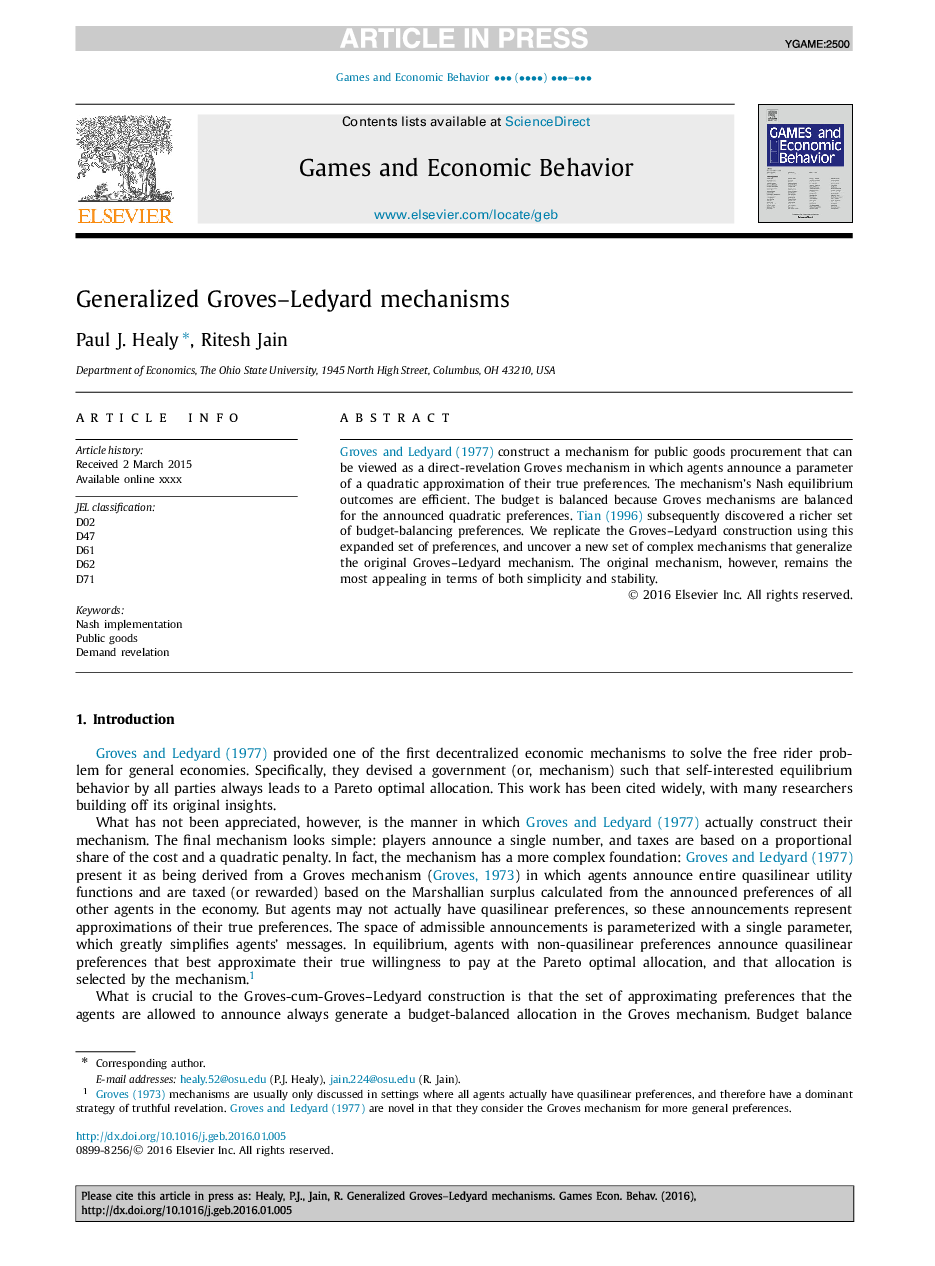| Article ID | Journal | Published Year | Pages | File Type |
|---|---|---|---|---|
| 5071428 | Games and Economic Behavior | 2017 | 14 Pages |
Abstract
Groves and Ledyard (1977) construct a mechanism for public goods procurement that can be viewed as a direct-revelation Groves mechanism in which agents announce a parameter of a quadratic approximation of their true preferences. The mechanism's Nash equilibrium outcomes are efficient. The budget is balanced because Groves mechanisms are balanced for the announced quadratic preferences. Tian (1996) subsequently discovered a richer set of budget-balancing preferences. We replicate the Groves-Ledyard construction using this expanded set of preferences, and uncover a new set of complex mechanisms that generalize the original Groves-Ledyard mechanism. The original mechanism, however, remains the most appealing in terms of both simplicity and stability.
Related Topics
Social Sciences and Humanities
Economics, Econometrics and Finance
Economics and Econometrics
Authors
Paul J. Healy, Ritesh Jain,
